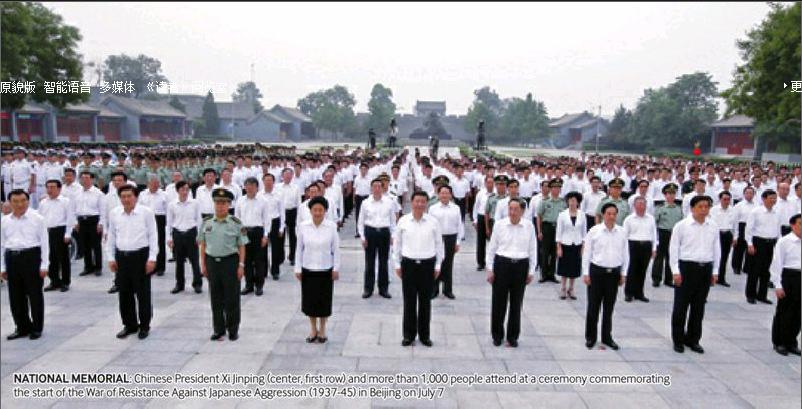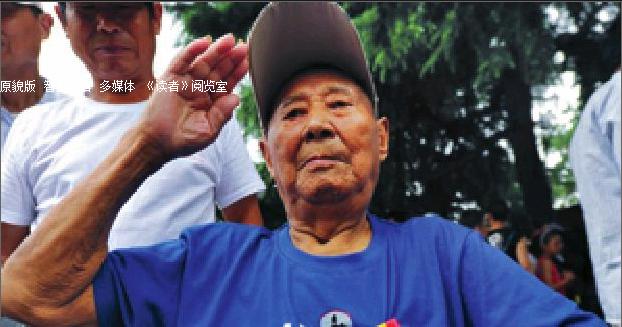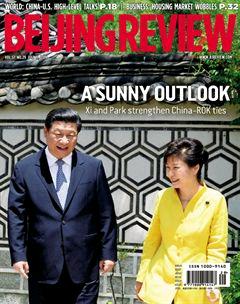History Never Forgets
By+Yuan+Yuan


Situated 15 km southwest of Beijings city center, Lugou Bridge is an 800-year-old stone structure, which the Italian merchant, traveler and explorer Marco Polo wrote of in one of his journals, earning it its more commonly recognized name in English—the Marco Polo Bridge. Though Marco Polos writings about its exquisite architecture may have made it known in the West, for the Chinese people, the bridge has been imbued with a significance it cannot be separated from ever since 1937.
On the night of July 7, 1937, Japanese troops conducted a drill near the bridge without informing the Chinese garrison. During the drill, the Japanese army claimed a solider had gone missing afterward and requested they be allowed cross the bridge to search for him. When they were refused by the Chinese army, the Japanese opened fire.
The battle, henceforth known as the Lugou Bridge Incident, marked the start of Chinas eight-year-long War of Resistance Against Japanese Aggression, which claimed more than 35 million Chinese lives. In less than a month after the incident, Beijing was captured.
“History is history and facts are facts. Nobody can change either history or the facts. Anyone who intends to deny, distort or beautify the Japanese history of aggression will not find agreement among the Chinese people nor the people of any other country,” said Chinese President Xi Jinping at a ceremony commemorating the 77th anniversary of the Lugou Bridge Incident in Beijing on July 7.
Xi made the remarks in response to repeated attempts made by right-wing elements in Japans political sphere to play down the countrys history of aggression and their visits to the notorious yasukuni Shrine, which honors war criminals, a move that has alarmed many of its regional neighbors including China and South Korea.
These wounds have once again been reopened as the cabinet of Prime Minister Shinzo Abe on July 1 approved a resolution that would allow the country to exercise their right to collective self-defense by reinterpreting its pacifist Constitution, despite strong protests both at home and abroad.
According to Article 9 of Japans Constitution, the country gave up all rights to a military barring a self-defense force after World War II, owing to the heinous war crimes it committed in other Asian countries.
However, the July 1 resolution would enable Tokyo to fight for “countries with close ties”with Japan even though Japan itself is not under attack. This move paves the way for Japan to send its troops to fight overseas, which many believe is the first step in what could be the renewed militarization of Japan.endprint
During the ceremony on July 7, President Xi also unveiled a sculpture honoring the veterans who fought in the war from 1937 to 1945.
“The inauguration of this sculpture is to commemorate those who devoted their lives to fighting for our independence and freedom as well as those who made great contributions to peace and justice, and to console the victims of the war,” Xi said.
Undeniable
Within five months of Japans invasion into Beijing, they captured a large part of Chinese territory in the north and east. After they took over Nanjing, historically also known as Nanking and capital of China at the time, on December 13, 1937, they embarked on a series of atrocities including wanton rape, plunder, arson and destruction throughout the city. The Nanjing Massacre lasted for six weeks till the end of January 1938. More than 300,000 Chinese were killed.
In 1997, on the 60th anniversary of the Nanjing Massacre, a book on the slaughter was published in the United States—The Rape of Nanking: The Forgotten Holocaust of World War II. The author, Iris Chang, was a ChineseAmerican historian and journalist who spent three years researching the massacre and searching for materials and survivors. Chang tragically took her own life seven years later in 2004 while researching for her fourth book, which was to be on the Bataan Death March, where the forcible transfer of Filipino and U.S. prisoners of war by the Japanese military resulted in the death of an estimated 2,500-10,000 Filipinos and a further 100-650 Americans.
The Rape of Nanking, which remained on The New York Times Bestseller list for 10 weeks, documents atrocities committed against the Chinese by the Japanese army, and includes interviews with victims. Based on the book, a U.S.-produced documentary film, Nanking, was released in 2007.
During World War II, the Japanese army invaded China and a number of Southeast Asian countries, causing immeasurable damage to all Asian people. Civilians were killed by gunfire, bombs, gas and biological weapons; women were raped; and forced laborers were tortured to death.
Li Buhong, from Dean County in central Chinas Jiangxi Province, is among the dwindling ranks of Chinese veterans who fought in the war against Japanese aggression. He was 13 when the Lugou Bridge Incident broke out and joined the army five years later.
“I have seen the cold-blooded, inhuman violence the Japanese invaders committed toward my countrymen,” said Li, now 90. “Now they want to deny their invasion. Thats senseless.”endprint
Zhou yongsheng, a professor of Japanese studies at China Foreign Affairs University in Beijing, said, “Our choice in remembering history is not to add fuel to hatred but to avert the historical tragedy from happening again.”
Even greater evidence
Pan Xun, a professor at Chongqing-based Southwest University, calls for increased research and protection of historical records from the 1937-45 period to thwart the Japanese right-wings attempts to distort the countrys history of aggression.
“More people, including the Japanese, should learn from history, and face up to history, so that we can understand the brutality of war,” Pan said.
Starting from July 3, the State Archives of China began releasing confessions by 45 Japanese war criminals, who were tried and convicted by military tribunals in China after World War II.
The archives include original written confessions, supplements, corrections, postscripts, as well as Chinese translations with abstracts. The original materials amount to more than 200,000 pages.
The one released on July 7 was the written confession of Tsutomu Nagashima, commander of the 54th Brigade of the 59th Division of the Japanese Army from 1942 to 1945. Japanese troops under the command of Nagashima conducted 15 battles, killing 1,660 Chinese soldiers and 970 civilians, as well as burning down over 2,220 civilian houses, from April 1942 to July 1945, according to his confession.
Feng Wei, a professor of Japanese history studies at Fudan University in Shanghai, said that the evidence is undeniable, and it is time for people to “bring an end to the appalling rush of Japanese lawmakers continually denying the countrys wartime deeds.”
On July 7 and 8, the Memorial Hall of the victory of the Anti-Japanese War and the Acceptance of the Japanese Surrender in Zhijiang, central Chinas Hunan Province, also released several videos of the first major Japanese surrender in China on August 21, 1945. The event took place at Zhijiang Airfield and marked the end of the war of anti-Japanese aggression in China. This is the first time that China has released the historic clips, which were shot by Americans and provided by the U.S. National Archives.
In addition, the National Memorial website was officially launched on July 6 in Chinese, Japanese and English.
The website, which is in black and white, catalogues the history of Chinas anti-Japanese aggression war, commemorates the dead and spreads knowledge about national memorial activities.
“The website will help Chinese across the world and our peace-loving international friends to better know history and remember the victims anytime and anywhere,” said Zhu Chengshan, Curator of the Memorial Hall of the victims in the Nanjing Massacre by Japanese Invaders.endprint

